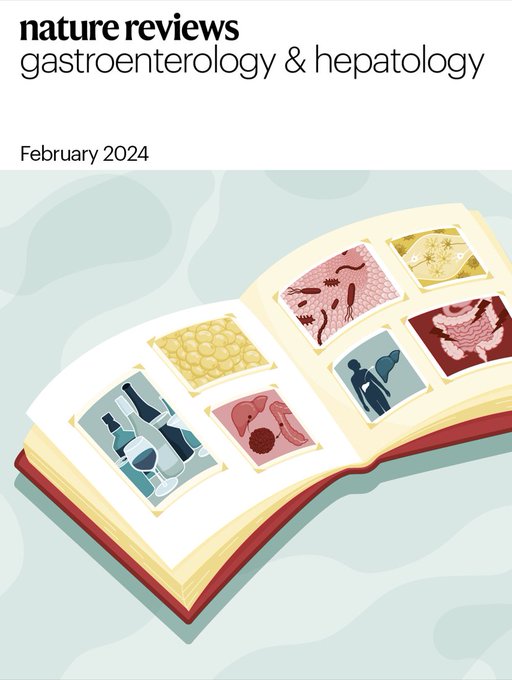肝细胞癌中WNT-β-catenin信号:从实验到临床试验
IF 51
1区 医学
Q1 GASTROENTEROLOGY & HEPATOLOGY
引用次数: 0
摘要
通过CTNNB1(编码β-catenin)的功能获得突变或AXIN1或APC的功能丧失突变,在大约50%的肝细胞癌(HCC)患者中观察到WNT-β-catenin活化。目前,HCC的一线治疗方法是免疫检查点抑制剂(ICI)组合,而β-catenin活性HCC由于其独特的肿瘤免疫微环境(TIME)而受到越来越多的关注。已知该途径驱动免疫排斥的TIME,但临床研究提供了更细致入微的视角,出现了一种新的“免疫样”HCC亚类,矛盾的是,它富含CTNNB1突变,并且具有高水平的T细胞浸润。因此,用ICIs治疗β-catenin激活的患者和动物模型表现出异质反应。此外,由于3区代谢形成的独特代谢环境,这些肿瘤表现出更高的脂肪酸氧化,从而促进肿瘤生长,这是肝小叶中WNT-β-catenin信号传导的生理功能。用于检测靶向治疗患者分子亚类的生物标志物正在开发中。在这篇综述中,我们讨论了在体外和体内模型、单细胞和空间测序的驱动下,我们对β-catenin活性HCC的时间和代谢的理解的进展,以及它们对使用针对WNT-β-catenin信号传导的精确疗法治疗一部分HCC的意义。本文章由计算机程序翻译,如有差异,请以英文原文为准。
WNT-β-catenin signalling in hepatocellular carcinoma: from bench to clinical trials.
WNT-β-catenin activation is observed in around 50% of all patients with hepatocellular carcinoma (HCC), through either gain-of-function mutations in CTNNB1 (which encodes β-catenin) or loss-of-function mutations in AXIN1 or APC. Currently, first-line therapies for HCC are immune checkpoint inhibitor (ICI) combinations, and β-catenin-active HCCs have garnered increased attention due to their unique tumour immune microenvironment (TIME). This pathway is known to drive an immune-excluded TIME, but clinical investigations have provided a more nuanced perspective, with the emergence of a new 'immune-like' subclass of HCC that is paradoxically enriched for CTNNB1 mutations and has high levels of T cell infiltration. As such, patients and animal models with β-catenin activation treated with ICIs exhibit heterogeneous responses. Additionally, these tumours exhibit higher fatty acid oxidation to fuel tumour growth owing to a unique metabolic milieu shaped by zone 3 metabolism, which is a physiological function of WNT-β-catenin signalling in the liver lobule. Biomarkers to detect molecular subclasses of patients for targeted therapies are being developed. In this Review, we discuss advances in our understanding of the TIME and metabolism of β-catenin-active HCC, driven by in vitro and in vivo models and single-cell and spatial sequencing, and their implications for the treatment of a subset of HCCs using precision therapies against WNT-β-catenin signalling.
求助全文
通过发布文献求助,成功后即可免费获取论文全文。
去求助
来源期刊
CiteScore
52.30
自引率
0.60%
发文量
147
审稿时长
6-12 weeks
期刊介绍:
Nature Reviews Gastroenterology & Hepatology aims to serve as the leading resource for Reviews and commentaries within the scientific and medical communities it caters to. The journal strives to maintain authority, accessibility, and clarity in its published articles, which are complemented by easily understandable figures, tables, and other display items. Dedicated to providing exceptional service to authors, referees, and readers, the editorial team works diligently to maximize the usefulness and impact of each publication.
The journal encompasses a wide range of content types, including Research Highlights, News & Views, Comments, Reviews, Perspectives, and Consensus Statements, all pertinent to gastroenterologists and hepatologists. With its broad scope, Nature Reviews Gastroenterology & Hepatology ensures that its articles reach a diverse audience, aiming for the widest possible dissemination of valuable information.
Nature Reviews Gastroenterology & Hepatology is part of the Nature Reviews portfolio of journals.

 求助内容:
求助内容: 应助结果提醒方式:
应助结果提醒方式:


